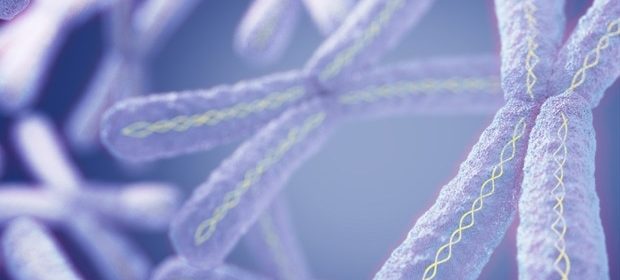What is Aicardi Syndrome?

Aicardi syndrome is a rare genetic condition that mainly affects newly born females. The condition is characterized by a partial or complete absence of an important brain structure called the corpus callosum, which connects the two halves of the brain.
Other clinical features include yellowish spots on the retina and infantile spasms. The retinal lesions are referred to as chorioretinal lacunae. Children start to experience spasms at around the age of three months, when the final neural synapses are starting to close. The condition is usually diagnosed before the age of five months.
Not all children affected by Aicardi syndrome experience the clinical features described so far and additional symptoms include small head circumference (microcephaly), poor muscle tone in the head and trunk, limb spasticity, abnormal development of the ribs and spinal vertebrae, optic nerve abnormality, small eyes (microphthalmia), facial asymmetry, skin problems and small hands. Girls affected by the condition also suffer from varying degrees of mental retardation and delayed development.
History and prevalence
Aicardi syndrome was first recognized by a French neurologist called Jean Aicardi in 1965. In 1998, a review article by Aicardi describing the syndrome was published in the journal International Pediatrics. Estimates suggest that the worldwide prevalence of Aicardi Syndrome is around several thousand with almost 900 such cases identified in the United States.
Genetics and inheritance
As an X-linked dominant disorder, Aicardi syndrome usually affects females. In the few cases where males have been affected, they have carried an extra X chromosome (XXY), a condition know of as Klinefelter's syndrome. The mutation occurs sporadically and noone with Aicardi syndrome is known to have passed the disorder onto their offspring.
Sources
- http://www.ninds.nih.gov/disorders/aicardi/aicardi.htm
- www.epilepsy.ie/…/SCAE_Aicardi_Syndrome.pdf
- deepblue.lib.umich.edu/…/410050513_ftp.pdf?sequence=1
- mtdeafblind.ruralinstitute.umt.edu/…/EtiologiesCharacteristics.pdf
- www.neurologyindia.com/article.asp
Further Reading
- All Aicardi Syndrome Content
- Aicardi Syndrome Genetics
- Aicardi Syndrome Diagnosis
- Aicardi Syndrome Treatment
Last Updated: Aug 23, 2018

Written by
Dr. Ananya Mandal
Dr. Ananya Mandal is a doctor by profession, lecturer by vocation and a medical writer by passion. She specialized in Clinical Pharmacology after her bachelor's (MBBS). For her, health communication is not just writing complicated reviews for professionals but making medical knowledge understandable and available to the general public as well.
Source: Read Full Article